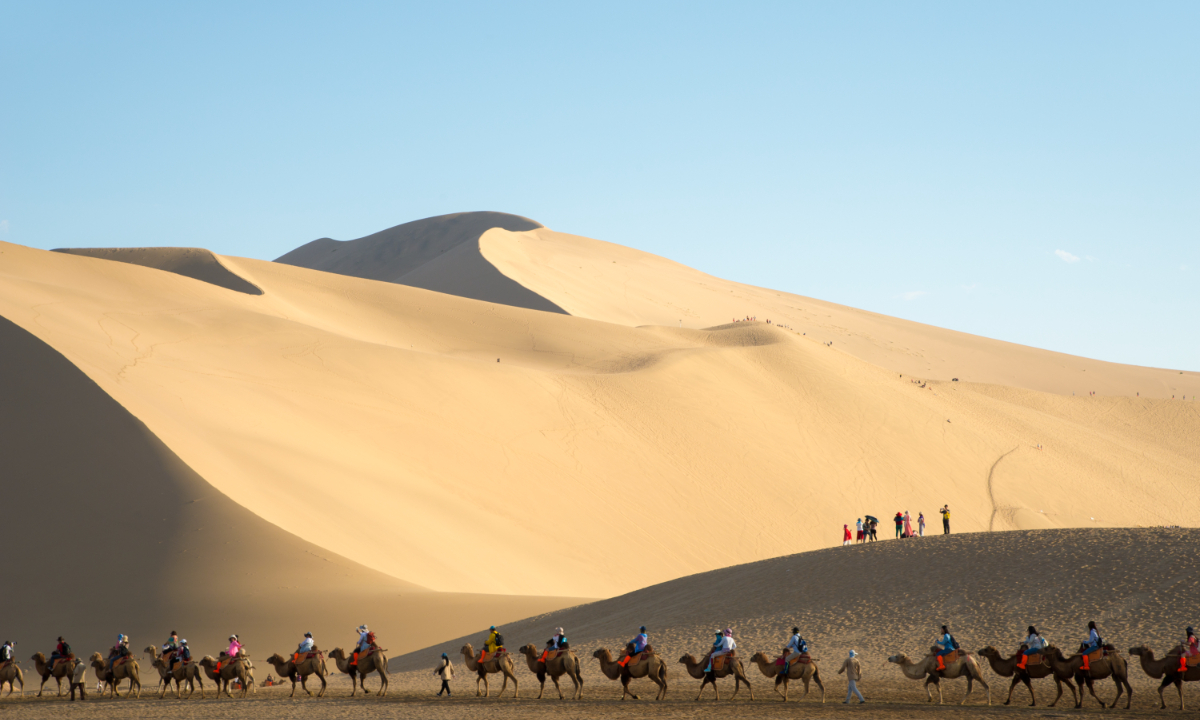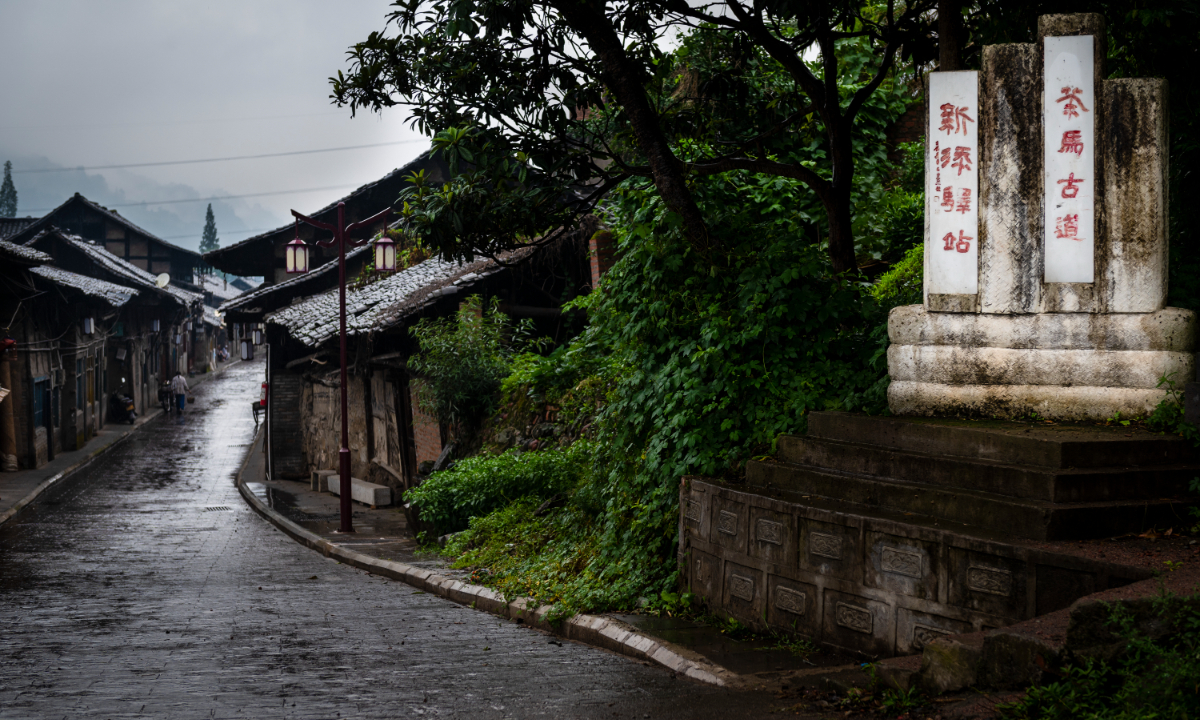Editor's Note:China's traditional-tea making techniques and their associated social practices successfully became UNESCO's latest world intangible cultural heritage on Tuesday, increasing the number of world intangible cultural heritages in China to 43.
Tea is ubiquitous in Chinese people's daily life and has also influenced the lives of people around the world through the Silk Road. It's a pleasure to see the successful application of this ancient art.
In this series on Chinese tea culture, the Global Times shares with readers what makes this intangible cultural heritage so special. This is the second installment, which elaborates the role that tea has played in international exchanges and how Chinese tea culture spread around the world through ancient trade routes. The first installment introduced why tea culture could be
inscribed on the list.

A camel caravan Photo: VCG
The news that China's traditional tea-making techniques and their associated social practices were listed as a world intangible cultural heritage has filled many Chinese people with enthusiasm about tea, while bringing the world's focus on Chinese tea culture again.
The history of tea stretches back over thousands of years and spans not only the vast regions encompassed by the Silk Roads but much of the globe. Tea making techniques and other tea-related customs have spread from China to different corners of the world, be it green, black or oolong tea.
In December 2019, the UN General Assembly approved to designate May 21 as International Tea Day, greatly raising the profile of tea around the world. Now, with the inclusion on the UNESCO World Intangible Heritage List, the international influence of Chinese tea culture is sure to develop further.
Yang Feng, one intangible culture inheritor of Chinese white tea in East China's Fujian Province, told the Global Times on Thursday that the successful application has confirmed the value of Chinese tea and its related production techniques around the world. With the influence of the Belt and Road Initiative, the inclusion will facilitate the healthy and sustainable development of the global tea industry and promote international tea culture exchanges that encourage more people in the world to learn about and "fall in love with" Chinese tea.

The ancient Tea Horse Road in Southwest China's Yunnan Province Photo: VCG
Spreading around the worldIn the application submitted to UNESCO, the function of tea as an ambassador for spreading traditional Chinese culture and lifestyles to the world and promoting international exchanges is considered one of the most significant qualifications to become a world intangible cultural heritage.
Tea has been consumed in China for thousands of years, with some of the earliest references to tea drinking dating to the Shang Dynasty (c.1600BC-1046BC), where it was consumed in what is today Southwest China's Yunnan Province primarily as a medicinal drink.
Developing across several dynasties, especially the Tang Dynasty (618-907) and Song Dynasty (960-1279), China tea spread across the Eastern Silk Road to Japan and the Korean Peninsula. In the 6th century, envoys were sent from Japan to China to learn about tea and its associated culture and seeds were brought via the Eastern Silk Road to Japan, leading to the plant being cultivated in the country.
Yu Jinlong, a cultural expert specializing in tea, told the Global Times on Wednesday that as the hometown of tea, China exported its tea to Asian countries through trade and cultural exchanges during the Tang Dynasty. From there, it spread to Europe, the Middle East and the Americas in the 16th century.
Currently, there are more than 5 billion tea drinkers around the world and more than 120 countries import tea from China. Under the influence of Chinese tea culture, countries including the UK, Japan, South Korea and Morocco have also formed their own tea culture.
Tea also spread among different ethnic groups in China via trade routes such as the ancient Tea Horse Road.
Zou Jiaju, Chairman of the Tea Industry Association in Yunnan Province, told the Global Times on Thursday that after the ancient Silk Road was blocked by wars and plague, the ancient Tea Horse Road - a network of caravan routes that can be traced back to the Tang Dynasty - reconnected Eurasia through the Qinghai-Xizang (Tibet) Plateau.
Over 1,300 years ago, the Princess Wencheng of the Tang Dynasty took tea culture to Xizang after she married the Tibetan King Songtsen Gampo. Over time, the ancient Tea Horse Road became an important route for the tea trade between the Central Plains and the plateau. The road gradually formed a network of multi-cultural interaction and exchange, with more than 20 ethnic groups living together, gathering together various cultural forms such as Central Plains culture, traditional Tibetan culture and Dongba culture.
"The tea culture in today's Xizang Autonomous Region still maintains the traditions of the Tang Dynasty, as we still see locals add salt to their tea," said Zou.
Golden reputationYang, the intangible culture inheritor of Chinese white tea, said he has become more confident in the future development of the Chinese tea industry.
"The inclusion is just the beginning. We need to continue focusing on high-quality Chinese tea and treasure the 'golden name card' that is the Chinese tea brand," said Yang.
Tea culture's international influence continues to expand today.
According to Yang, the tea factory where he works has cooperated with some international organizations to provide "volunteer work exchange" programs for people to study Chinese tea making techniques.
Over the past few years, the program has attracted hundreds of volunteers from more than 10 countries, who live at the tea factory and experience life together with the workers as they pick and make tea, and finally take back what they have learned to their motherlands.
The complex intercultural exchanges associated with tea and tea culture were the direct result of the movement of traders, missionaries, and doctors along the Silk Road. Tea culture is just one excellent example of the new imports and social practices that were often later transformed and redefined according to the specificities of the societies into which they were introduced. The effects of this free flow of ideas, goods, and artistic elements along the Silk Road constitutes an important shared heritage in the contemporary world, according to UNESCO.





